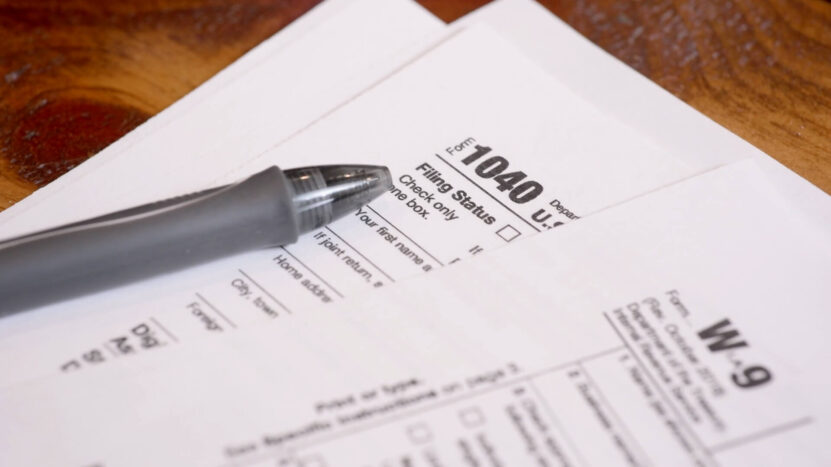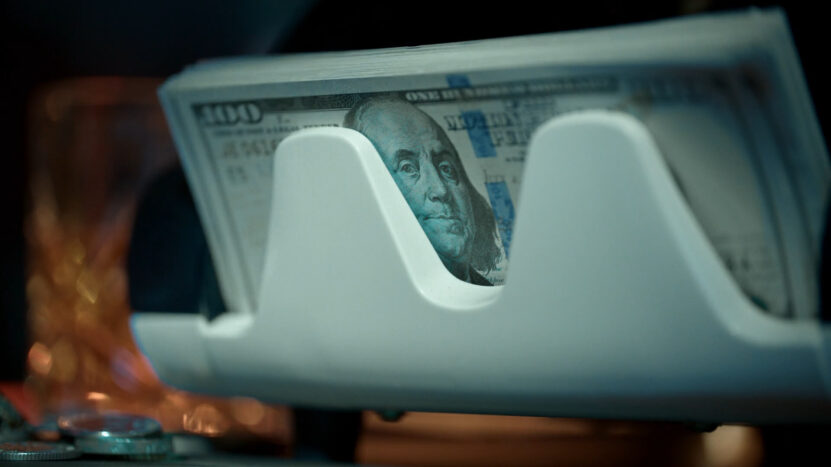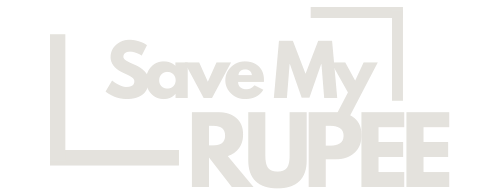Managing how you take money out of your business is crucial for maintaining financial stability and avoiding tax complications.
An owner’s draw allows you to withdraw profits or contributions from your business for personal use, but it’s important to know how this impacts your business and taxes.The draw isn’t subject to payroll taxes, and it’s recorded differently than salaries or wages, offering flexibility.
This article will clarify who can take owner’s draws, how they affect your finances, and key factors you need to manage when deciding the right approach for your business structure.
| Business Structure | Owner’s Draw Allowed? | Tax Treatment | Payroll Impact |
|---|---|---|---|
| Sole Proprietorship | Yes | Not taxed when drawn; reported as personal income | No payroll taxes applied |
| Partnership | Yes | Each partner reports draw as personal income | No payroll taxes applied |
| LLC | Yes | Not taxed when drawn; reported as personal income | No payroll taxes applied (if not taking a salary) |
| S Corporation | No (distributions instead) | Must pay salary first; distributions not subject to payroll taxes | Payroll taxes apply to salaries only |
| C Corporation | No (dividends instead) | Dividends taxed as personal income | Payroll taxes apply to salaries only |
Types of Businesses That Use Owner’s Draws
Not all businesses can use an owner’s draw as a method of compensation. The ability to take owner’s draws depends on the legal structure of your business. Generally, owner’s draws are available to owners of sole proprietorships, partnerships, and LLCs. Let’s break down each type:
1. Sole Proprietorships

A sole proprietorship is the simplest business structure, where the owner and the business are legally the same entity. This allows the owner to directly withdraw profits from the business, referred to as an owner’s draw. Since the owner’s equity represents the business’s net worth, each time you take a draw, you reduce this equity.
For example, if you own a small consulting business and want to withdraw $5,000 for personal expenses, you can simply transfer that amount from the business account to your personal account as an owner’s draw.
2. Partnerships
Partnerships function similarly to sole proprietorships but with multiple owners. Each partner can take a draw according to their ownership percentage, which is typically outlined in the partnership agreement.
For instance, if two partners equally share a business, and the business earns $100,000 in profit, each partner can potentially withdraw $50,000 as an owner’s draw. However, clear communication is essential, as taking excessive draws can affect business cash flow and create conflicts among partners.
3. Limited Liability Companies (LLCs)

LLCs offer flexibility in how owners, called members, compensate themselves. Single-member LLCs can operate similarly to sole proprietorships, taking draws as needed. Multi-member LLCs function more like partnerships, with members taking draws based on their ownership stake.
For instance, a single-member LLC owner might withdraw $3,000 each month to cover living expenses, while a multi-member LLC might have a structured approach, setting limits to avoid disrupting operations. Importantly, LLCs can also choose to be taxed as S Corporations, where owners take salaries instead of draws.
4. S Corporations (S Corps)
In S Corporations, owners cannot take owner’s draws. Instead, they must pay themselves a reasonable salary and can then receive distributions of profits. The IRS requires that salaries be fair and market-based, ensuring that owners pay payroll taxes on these earnings.
For example, if an S Corp owner takes a $50,000 salary, they must report this on payroll and pay the associated taxes before taking any additional profit distributions.
5. C Corporations
C Corporations do not allow for owner’s draws either. Owners receive compensation through salaries, which are subject to payroll taxes. Additionally, they can receive dividends as profit distributions, which are taxed separately from salaries.
This structure can lead to double taxation—once at the corporate level and again at the personal level when dividends are distributed.
Tax Implications of Owner’s Draws
| Business Structure | How Owner’s Draw is Taxed | Tax Filing Requirements | Payroll Tax Impact |
|---|---|---|---|
| Sole Proprietorship | Owner’s draw is not taxed directly; entire business profit is taxed as personal income. | File Schedule C with Form 1040; pay self-employment tax (Social Security & Medicare) quarterly. | No payroll taxes; self-employment tax covers Social Security and Medicare. |
| Partnership | Each partner’s draw is part of their share of business income, taxed as personal income. | File Form 1065 for the partnership; each partner files Schedule K-1 and pays self-employment tax. | No payroll taxes; self-employment tax applies to each partner’s share. |
| LLC (Single Member) | Owner’s draw is not taxed directly; taxed like a sole proprietorship. | File Schedule C with Form 1040; pay self-employment tax quarterly. | No payroll taxes; self-employment tax covers obligations. |
| LLC (Multi-Member) | Each member’s draw is part of their income share, taxed as personal income. | File Form 1065; each member files Schedule K-1 and pays self-employment tax. | No payroll taxes; self-employment tax applies to each member’s share. |
| S Corporation | Owner’s draw is treated as a distribution; taxed on owner’s personal income return. | File Form 1120-S; owners pay taxes on distributions and a reasonable salary with payroll taxes. | Payroll taxes apply only to the owner’s salary, not to distributions. |
| C Corporation | Owners receive salaries and dividends; dividends are subject to double taxation. | File Form 1120; dividends taxed both at corporate level and on owner’s personal return. | Payroll taxes apply only to salaries; dividends are taxed separately. |
Taking an owner’s draw has specific tax consequences that differ based on your business structure and the way draws are handled. Unlike traditional employee salaries, owner’s draws are not subject to payroll taxes.
However, understanding how these draws are taxed and recorded is vital for accurate financial planning and compliance.
1. Tax Treatment for Sole Proprietorships and Partnerships
In sole proprietorships and partnerships, the owner’s draw is not considered taxable income by itself. Instead, the business’s total profit is taxed regardless of how much is drawn.
For example, if a sole proprietor’s business earns $80,000 in profit and they withdraw $40,000 as an owner’s draw, they are still taxed on the full $80,000 profit.
The owner must pay income tax and self-employment tax (covering Social Security and Medicare) on that profit. The IRS expects these taxes to be paid quarterly to avoid penalties.
2. LLCs and Tax Considerations
LLCs have similar tax implications. Single-member LLCs follow the same rules as sole proprietorships, where draws are not taxed when withdrawn but are part of the owner’s taxable income.
For multi-member LLCs, each member reports their share of the business income on their personal tax returns, which may be affected by how much they draw from the company. Quarterly estimated taxes are also required to cover income and self-employment tax liabilities.
3. S Corporations and Payroll Requirements
In S Corporations, the IRS mandates that owners take a reasonable salary before any distributions (which are similar to draws). The salary is subject to payroll taxes, and any distributions after that are not.
However, those distributions still count as income and are reported on the owner’s tax return. This structure helps minimize payroll taxes while ensuring compliance with tax regulations.
4. C Corporations and Double Taxation
C Corporations do not allow owner’s draws. Instead, shareholders (including owner-shareholders) receive salaries, which are taxed at the corporate level and again as personal income.
Additionally, dividends may be issued, which are taxed separately. This double taxation scenario is a key factor when considering compensation strategies for C Corp owners.
5. Estimating Taxes and Self-Employment Tax
Owners who take draws must plan for quarterly estimated tax payments, which cover both federal income tax and self-employment tax. This is critical for sole proprietors, partnerships, and LLCs.
Failure to pay these estimated taxes on time can result in penalties. For example, if you anticipate an annual tax liability of $10,000, you would need to pay $2,500 each quarter to meet the IRS requirements.
6. Non-Deductibility of Owner’s Draws
Unlike salaries, owner’s draws are not deductible business expenses. This is an important distinction for tax purposes. If you run a sole proprietorship and draw $20,000 from the business, that $20,000 isn’t deducted from your taxable income.
Instead, your taxes are based on the business’s net profit after deducting all other business expenses.
How an Owner’s Draw Affects Payroll
An owner’s draw operates outside the traditional payroll system, making it distinct from regular salaries or wages. It’s important to understand how this impacts both payroll management and overall business finances. Here’s what you need to know:
1. No Payroll Taxes on Owner’s Draws

Unlike employee salaries, owner’s draws are not subject to payroll taxes such as Social Security, Medicare, or unemployment taxes. This distinction is crucial because it means the draw amount does not reduce your business’s taxable income as payroll expenses would.
For example, if you draw $10,000 from your business, no payroll tax is withheld, but you still need to account for this amount when filing your income taxes.
2. Payroll System Exclusion
Since an owner’s draw isn’t considered a salary, it bypasses the payroll process entirely. Payroll systems typically calculate taxes and deductions based on wages, but an owner’s draw is recorded directly in your accounting software as a reduction in owner’s equity.
This ensures that while the draw affects your business’s cash flow, it does not trigger the need for payroll tax calculations or reports.
3. Equity Reduction, Not Expense
Owner’s draws reduce the owner’s equity in the business rather than being treated as a deductible business expense. For instance, if your owner’s equity stands at $50,000 and you withdraw $8,000, your equity reduces to $42,000.
The reduction impacts your financial statements but does not create an operating expense that would lower your business’s taxable profit.
4. Payroll vs. Draw in S Corporations
In S Corporations, the IRS requires owners who work in the business to take a reasonable salary before taking any distributions. This salary is processed through payroll and is subject to payroll taxes.
Once the salary is paid, the owner can take additional distributions, which are not subject to payroll taxes. For example, if an S Corp owner earns a $60,000 salary and takes an additional $20,000 distribution, only the salary is taxed through payroll.
5. Simplicity for Small Businesses
For sole proprietors and LLCs, taking an owner’s draw can simplify the process of compensating yourself without setting up complex payroll systems. The draw process is straightforward, requiring only a transfer from the business account to the owner’s personal account without the need for detailed payroll records.
However, this simplicity means you must still track draws accurately to ensure proper accounting and compliance with tax rules.
6. Long-Term Financial Implications
While skipping payroll taxes can save costs initially, it’s important to balance how much you draw with your business’s financial needs. Excessive draws can strain cash flow, making it difficult to cover operational expenses or invest in growth.
Additionally, without careful planning, large draws could leave you with a significant tax burden at year-end, as they do not offset taxable income like payroll expenses do.
Differences Between Owner’s Draw and Salary

Each approach has distinct implications for taxes, payroll, and business operations. Here’s a breakdown of these differences:
- Definition and Structure: An owner’s draw allows business owners to withdraw funds directly from their equity in the business. It is most common in sole proprietorships, partnerships, and certain LLCs. On the other hand, a salary is a fixed payment that business owners receive regularly, typically through a payroll system. Salaries are commonly used in corporations and are classified as a business expense.
- Tax Treatment: Owner’s draws are not directly taxed when withdrawn. Instead, the business’s overall profit is taxed as the owner’s personal income, regardless of how much is drawn. For instance, if your business earns $100,000 in profit and you take a $40,000 draw, your taxes are calculated based on the $100,000 profit, not the draw itself. Salaries, on the other hand, are subject to payroll taxes such as Social Security and Medicare. For example, if you receive a $50,000 salary, your business must withhold payroll taxes, and those taxes are deductible as a business expense.
- Flexibility in Compensation: Owner’s draws provide more flexibility since you can withdraw varying amounts based on your needs and cash flow. You could take a small draw during lean months and a larger one when profits are high. In contrast, salaries require consistency and must be paid regularly, regardless of the business’s cash flow. This fixed nature of salaries can be beneficial for budgeting but may pose challenges during periods of financial uncertainty.
- Impact on Business Financials: Taking an owner’s draw reduces your equity in the business rather than creating an expense. For example, if your equity is $60,000 and you withdraw $10,000, your equity decreases to $50,000. This does not affect your business’s net profit. On the other hand, salaries are recorded as an expense, which directly reduces your business’s taxable income. For instance, if your business has $200,000 in revenue and you pay yourself a $50,000 salary, your taxable income is reduced to $150,000.
- Suitable Business Structures: Owner’s draws are most suitable for sole proprietorships, partnerships, and LLCs. In these structures, the owner’s equity is a fluid account that can be accessed when needed. Salaries are more appropriate for corporations, especially S Corporations, where the IRS requires that owners take a reasonable salary before receiving any distributions. For example, if you operate an S Corporation, you must first pay yourself a fair market salary before taking additional profits as distributions.
- Regulatory Requirements: Salaries come with more regulatory requirements. You need to establish a formal payroll system, withhold taxes, and report the income on payroll tax forms. Owner’s draws are simpler, requiring no payroll processing or tax withholding. However, you must still keep accurate records and make estimated tax payments.
Recording and Managing Owner’s Draws
Accurately tracking and recording owner’s draws is essential for maintaining clear financial records and ensuring that your business remains compliant with tax regulations.
Unlike salaries, which go through payroll and are recorded as expenses, owner’s draws are reductions in owner’s equity. Here’s how to manage them effectively:
1. Recording Owner’s Draws
When you take an owner’s draw, you are withdrawing funds from the owner’s equity account. In your accounting system, this transaction should be recorded as a debit to the Owner’s Draw account and a credit to the Cash account. For instance, if you take a $5,000 draw, the journal entry would look like this:
Debit: Owner’s Draw – $5,000
Credit: Cash – $5,000
At the end of the year, the balance in the Owner’s Draw account is transferred to the Retained Earnings or Capital account, reflecting the total reduction in equity for that period. This reset ensures the draw account starts fresh in the new fiscal year.
2. Managing Multiple Draws
If you take multiple draws throughout the year, it’s important to track each one to avoid overestimating your equity. Regularly updating your balance sheet will provide a clear view of how much equity remains after each withdrawal.
For example, if your equity was $50,000 at the beginning of the year and you take monthly draws of $2,000, your equity will reduce accordingly each month. Using accounting software or a detailed spreadsheet can help automate and simplify this tracking.
3. Maintaining Cash Flow
One of the risks of taking owner’s draws is depleting your business’s cash reserves. Before taking a draw, it’s crucial to evaluate your business’s cash flow and upcoming financial obligations.
For instance, if your business has significant expenses in the near future, taking a large draw could leave you unable to cover them.
Consider your business’s financial needs before deciding on the amount and frequency of your draws.
4. End-of-Year Adjustments
At the end of the fiscal year, it’s common practice to transfer the balance of the Owner’s Draw account to the Retained Earnings account. This reflects the total equity reduction due to draws.
For example, if you took $30,000 in draws throughout the year, the closing entry would debit Retained Earnings and credit Owner’s Draw for $30,000, resetting the Owner’s Draw account for the new year.
5. Tax and Financial Reporting
Owner’s draws are not reported as a business expense and do not reduce your taxable business income. Instead, the total profit of your business is subject to income tax, regardless of how much you draw.
It’s essential to maintain detailed records of all draws to ensure accurate tax reporting. For instance, if your business earned $120,000 in profit and you took $40,000 as a draw, you still report $120,000 as taxable income, and your draw is simply a movement of equity.
6. Tools and Software for Managing Draws
Many accounting and payroll software solutions offer features specifically designed to manage owner’s draws. These tools can help you automate tracking, generate reports, and ensure that all transactions are properly recorded.
For instance, popular tools like QuickBooks and Xero allow you to set up an equity account for draws and automate the recording process, reducing the risk of errors.
Risks of Taking an Owner’s Draw

- Cash Flow Disruption: Taking large or frequent draws can strain your business’s cash reserves, potentially leaving insufficient funds for operational expenses, payroll, or unexpected costs.
- Equity Depletion: Owner’s draws reduce the equity in your business. Excessive draws can severely deplete your ownership stake, affecting your business’s long-term financial health.
- Tax Liabilities: Even though draws aren’t taxed directly, the business’s profits are still subject to income and self-employment taxes. If you don’t set aside enough for taxes, you could face significant liabilities at year-end.
- Inconsistent Personal Income: Since draws aren’t fixed like salaries, your income may vary, making it difficult to manage personal finances, especially during periods of lower business revenue.
- Potential Legal Disputes in Partnerships: In partnerships or multi-member LLCs, unequal or unauthorized draws can lead to disputes or even legal issues among co-owners.
- Borrowing Against Future Profits: Taking more than your current equity effectively puts your business in debt, creating financial strain and complicating tax obligations.
- IRS Scrutiny for S Corps: In S Corporations, taking distributions without first paying a reasonable salary can attract IRS penalties and additional tax assessments.
FAQs
How do I determine how much to take as an owner’s draw?
You should consider your business’s cash flow, upcoming expenses, and tax obligations. It’s important not to withdraw more than your available equity, as it could leave your business struggling financially.
Does an owner’s draw affect my credit score?
No, owner’s draws do not directly impact your personal credit score. However, if excessive draws lead to business debt or missed payments, it could indirectly affect your credit.
What’s the difference between an owner’s draw and a distribution?
An owner’s draw is typically used by sole proprietors and LLCs, while a distribution is more common in S Corporations. Distributions are profit shares given to shareholders, whereas draws reduce the owner’s equity.
Can I switch from taking a salary to taking an owner’s draw?
Yes, if your business structure allows it. LLCs, for example, can choose between taking a salary or a draw. However, corporations typically stick with salaries and distributions.
Can I take an owner’s draw if my business is losing money?
Technically, you can, but it’s risky. Taking draws when your business is not profitable reduces your equity and could lead to financial instability, making it harder for your business to recover.
Conclusion
An owner’s draw is a flexible way for business owners to pay themselves, particularly in sole proprietorships, partnerships, and LLCs. While it offers convenience and avoids payroll taxes, it’s important to carefully manage the amount and timing of draws to avoid cash flow issues and tax surprises.

